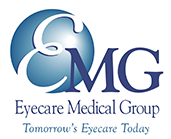
Well, it is! Age-Related Macular Degeneration, or AMD, is a common eye condition. As the name implies, it’s especially common in those that are older.
The American Academy of Ophthalmology observes AMD Awareness Month as a way of bringing attention to this often forgotten disease. AMD can lead to blindness and presents no early symptoms.
It’s important to understand your risk and have regular eye exams. Treatment for AMD is limited, but there are options for AMD patients.
The most important thing is to be aware of your risk and have any potential signs of AMD monitored by an eye care professional. Keep reading to learn more about AMD!
What Causes AMD?
The primary cause of AMD is simply aging. It occurs when the cells in the macula, the center of the retina, become damaged or destroyed over time.
These photosensitive receptor cells are a vital part of how light gets translated from your eye into images sent to your brain. When the macula becomes damaged, the center of your vision can become blurry or even blackout altogether.
There are two forms of AMD: dry and wet. Dry AMD is more common. It happens when deposits of fat called drusen develop under the macula and stretch the retina.
This damages and ultimately kills the photoreceptor cells. Wet AMD occurs when blood vessels in the macula begin to grow out of control. When this happens, they swell and even leak, scarring the surrounding tissue and destroying cells.
AMD Symptoms
AMD presents no early symptoms. But in the later stages, it can cause blurry vision, especially in the center of your visual field.
In very advanced stages, there may even be blank spots in your visual field. If you experience any of these symptoms, see your eye doctor right away.
Who is at Risk for AMD?
There are several factors that can put you at high risk for AMD. These include:
- Being over 60
- Smoking
- Having high cholesterol or blood pressure
- Having a family history of AMD
- Being Caucasian
- Having light-colored eyes
Most of these factors are things that you can’t control. But you can control some of them.
If you want to lower your risk for AMD, the best thing to do is live a healthy lifestyle. These mean don’t smoke and eat a balanced diet to keep your blood pressure and cholesterol levels down.
Prevention and Treatment
There is no way to prevent AMD, but you can lower your risk. You can and should see your eye doctor regularly. If you have AMD, this will allow your eye doctor to detect it sooner rather than later.
If you’re over 60, you should have eye exams at least once a year. Make sure your eye doctor tests you for AMD as well as other age-related eye conditions.
Unfortunately, there are few treatment options available to treat dry AMD. If you have dry AMD, your doctor will likely prescribe vitamin supplements that may delay cell degradation.
Wet AMD can be treated in a couple of different ways. One is with anti-VEGF injections. These injections inhibit VEGF which is the protein that causes blood vessel growth.
Another is laser therapy, a surgical procedure that can come in several forms. Your eye doctor will be able to work with you to find what treatment or combination of treatments works best for you.
But before they can help you, they need to know you have AMD. The easiest way to do this is to stay on top of your eye health by scheduling regular eye exams!
Keep your eyes healthy and happy by scheduling an appointment at Eyecare Medical Group in Portland, ME, today!





